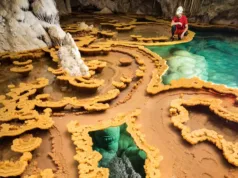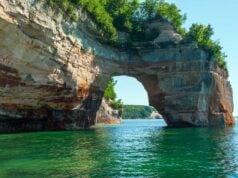Twyfelfontein Organ Pipes is a unique geological formation and a popular tourist attraction located in the Kunene Region of northwestern Namibia. Twyfelfontein is renowned for its ancient rock engravings and paintings, which have been recognized as a UNESCO World Heritage Site since 2007. However, the “Organ Pipes” refer to a specific rock formation within the Twyfelfontein area.
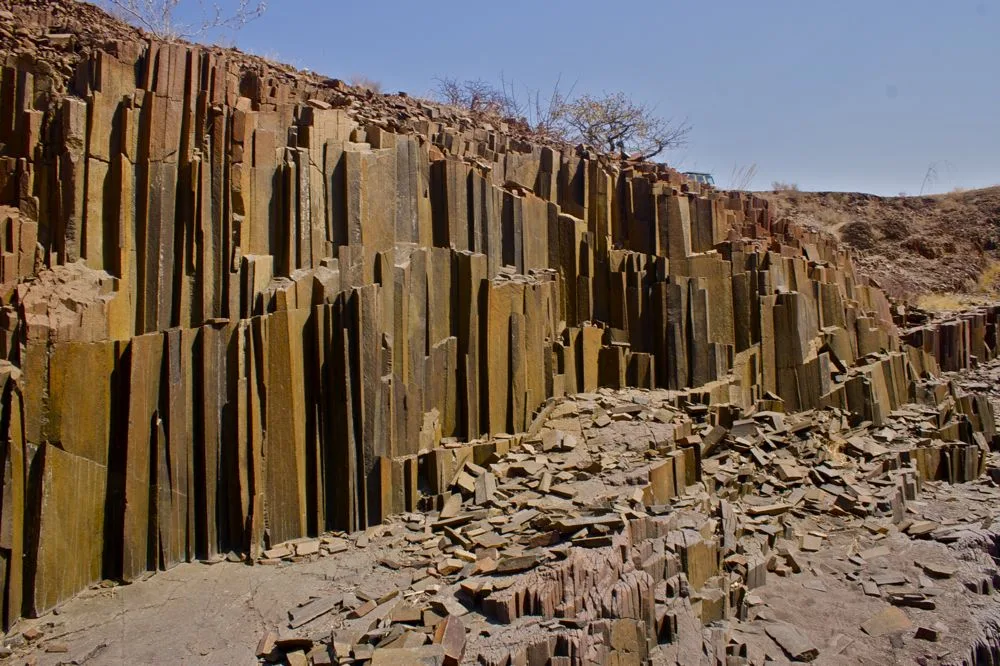
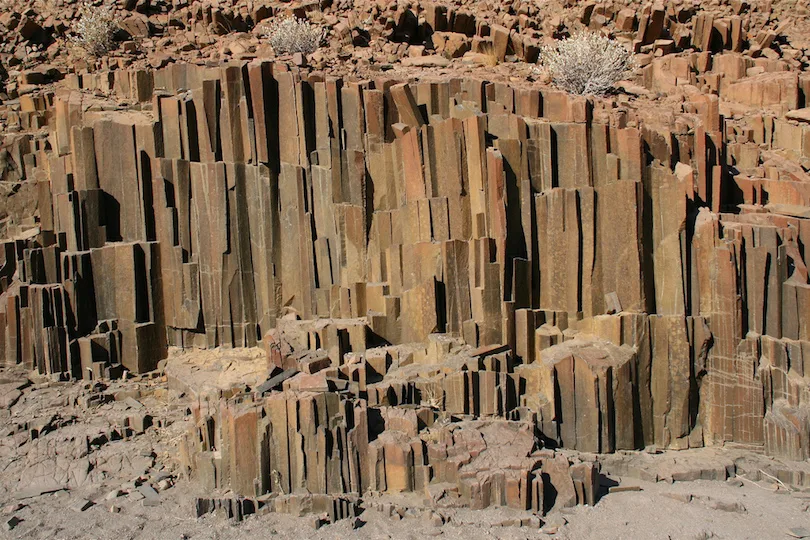
The Organ Pipes are a striking example of columnar jointing, a natural geological phenomenon that occurs when certain types of lava or magma cool and contract in a specific pattern, creating long, vertical, and polygonal columns. These columns are usually straight and have a hexagonal or pentagonal shape, similar to organ pipes in appearance, hence the name.
The formation of the Organ Pipes dates back millions of years when volcanic activity was prevalent in the region. Over time, the lava flow cooled and solidified, resulting in the development of these distinct, geometrically shaped columns. The overall effect is visually stunning and attracts visitors interested in geology and natural formations.
If you plan to visit Twyfelfontein and see the Organ Pipes, it is recommended to check the latest travel information and guidelines, as conditions and access to the site may vary based on the local regulations and tourism practices.
Geological Formation of the Organ Pipes
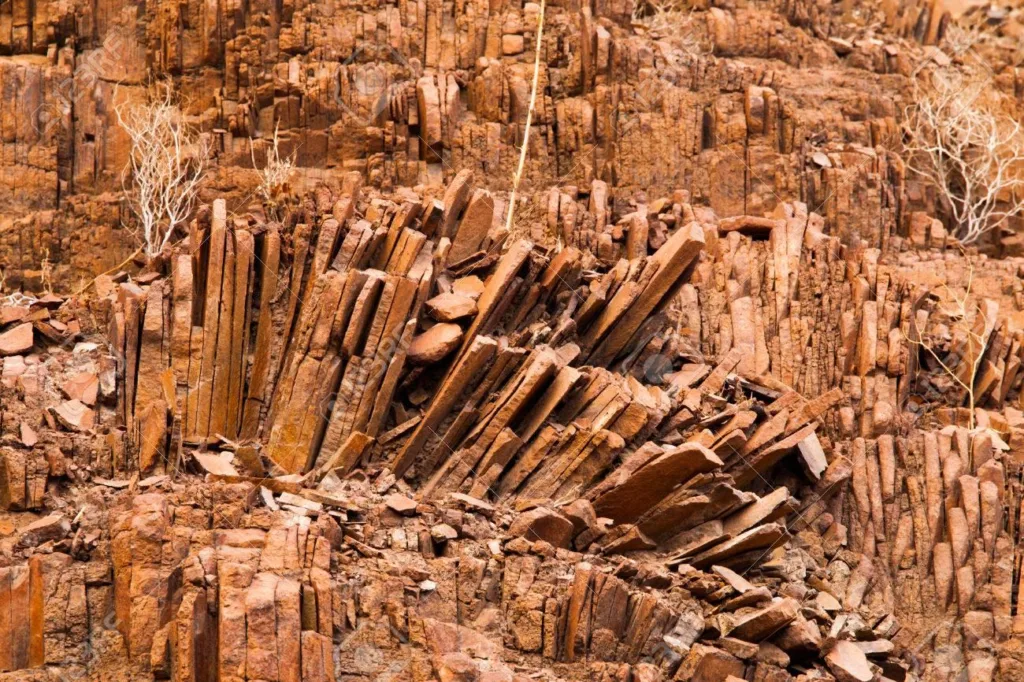
The geological formation of the Twyfelfontein Organ Pipes is a fascinating example of columnar jointing, a natural process that occurs during the cooling and solidification of certain types of lava or magma. Here’s an explanation of the formation process:
- Volcanic Activity: Millions of years ago, the region around Twyfelfontein was geologically active, with volcanic eruptions and lava flows being a common occurrence. During one of these volcanic events, basaltic lava, which is a type of lava with a low viscosity, flowed across the landscape.
- Cooling and Solidification: As the basaltic lava flowed, it came into contact with the cooler air or water present on the surface. The lava began to lose its heat rapidly and started to cool down. This cooling process is essential for the formation of columnar jointing.
- Contraction and Stress: As the lava cooled, it underwent a significant decrease in volume. This contraction caused the lava to crack and form a series of vertical fractures in the cooling rock. These fractures generally have hexagonal or pentagonal shapes, but occasionally other shapes like heptagonal or octagonal can also occur. The columns tend to be quite straight, running perpendicular to the cooling surface.
- Columnar Jointing: The cooling and contraction continued until the entire lava flow solidified into a massive basalt formation. Within this solidified mass, the vertical fractures developed into the distinct columnar joints we now see as the Organ Pipes. These columns are often several meters in height and can be closely packed together, resembling the pipes of an organ, hence the name.
It’s important to note that the precise size and shape of the columns depend on several factors, including the cooling rate of the lava, the mineral composition of the lava, and the presence of any external influences like nearby water sources.
The Organ Pipes at Twyfelfontein are a remarkable natural wonder, attracting visitors from around the world to witness this stunning geological formation and learn about the Earth’s processes that shaped it over millions of years.
Twyfelfontein Organ Pipes Rock Type

The rock type that forms the Twyfelfontein Organ Pipes is basalt. Basalt is an igneous rock that is formed from the rapid cooling and solidification of lava. It is a common volcanic rock and is characterized by its fine-grained texture, typically composed of minerals like pyroxene, feldspar, and olivine.
When basaltic lava flows across the landscape during a volcanic eruption, it cools relatively quickly when exposed to the cooler air or water on the surface. This rapid cooling causes the lava to solidify and contract, leading to the formation of columnar jointing. The columns in the Organ Pipes have a hexagonal or pentagonal shape due to the specific patterns of contraction and cracking that occur during the cooling process.
The columnar jointing in basaltic formations, such as the Organ Pipes at Twyfelfontein, is a striking example of the natural beauty and geological wonders that can be found in different parts of the world. It attracts visitors and geologists alike, offering a glimpse into the Earth’s processes that shaped these unique rock formations over millions of years.
Location and Access
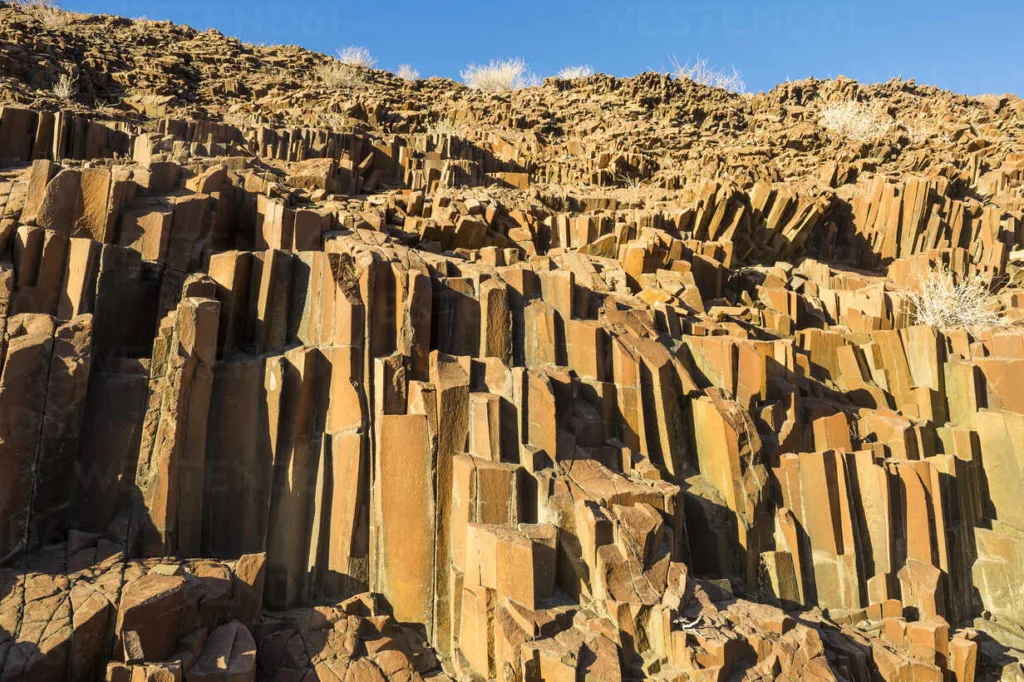
Twyfelfontein Organ Pipes is located in the Kunene Region of northwestern Namibia. Here’s information on the location and how to access the site:
Location: Twyfelfontein Organ Pipes is situated within the Twyfelfontein UNESCO World Heritage Site. The entire Twyfelfontein area is renowned for its rich cultural heritage and impressive geological formations, including the ancient rock engravings and paintings, as well as the Organ Pipes geological feature.
Access:
- By Road: The most common way to access Twyfelfontein Organ Pipes is by road. The site is approximately 72 kilometers (about 45 miles) west of the town of Khorixas, which is the capital of the Kunene Region. Khorixas serves as the gateway to Twyfelfontein, and from there, visitors can travel along well-marked gravel roads to reach the Organ Pipes.
- Guided Tours: Many visitors prefer to join guided tours that depart from Khorixas or other nearby towns. These tours are usually led by experienced guides who provide valuable insights into the geological and cultural significance of the area. Guided tours can also be organized from other popular tourist destinations in Namibia, such as Swakopmund or Windhoek.
- Self-Drive: Some adventurous travelers opt for self-drive trips to Twyfelfontein. If you choose to self-drive, it’s essential to have a suitable vehicle, preferably a 4×4, as the roads may be rough and challenging, especially during the rainy season. Additionally, ensure you have a map or GPS navigation, as parts of the area may have limited cell phone coverage.
- Entrance Fee: To visit Twyfelfontein and the Organ Pipes, there is usually an entrance fee that contributes to the conservation and maintenance of the site. The fee is payable at the entrance or visitor center.
- Accommodation: While Twyfelfontein is not a major town, there are lodging options available nearby. Some visitors choose to stay in Khorixas, where various accommodations, including lodges and guesthouses, are available.
It’s essential to check the latest travel information and regulations before visiting, as conditions and access may change due to weather, conservation efforts, or other factors. Additionally, respecting the site’s cultural and natural heritage by following guidelines and not causing any harm to the environment is vital to preserving this unique destination for future generations.
Tourism and Visitor Experience
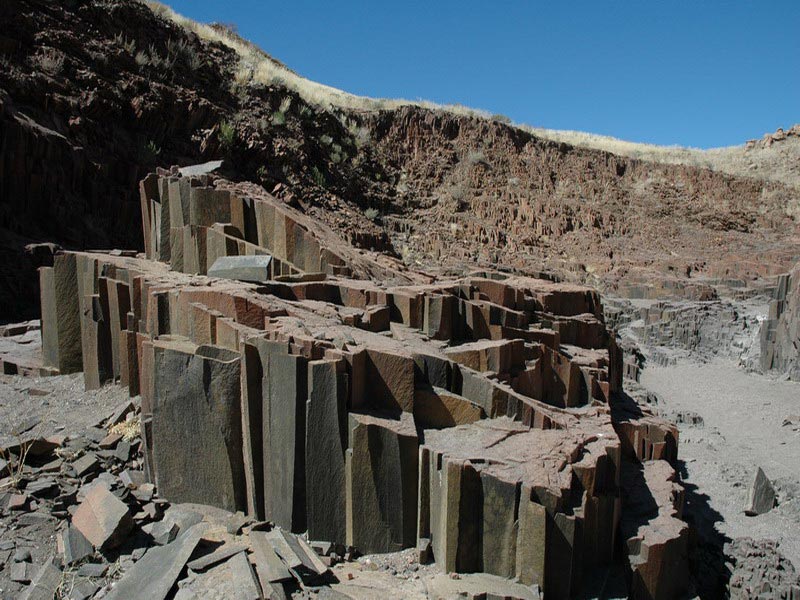
Tourism at Twyfelfontein Organ Pipes offers visitors a unique and enriching experience, combining geological wonders with cultural heritage. Here’s an overview of the tourism and visitor experience at the site:
- Geological Marvel: The main attraction at Twyfelfontein Organ Pipes is, of course, the remarkable geological formation of the Organ Pipes themselves. Tourists can marvel at the striking hexagonal and pentagonal columns, which stand like giant organ pipes formed through the cooling and solidification of lava millions of years ago. Guided tours and informational displays at the site explain the geological processes that created this natural wonder.
- Rock Engravings and Paintings: Twyfelfontein is famous for its extensive collection of ancient rock engravings and paintings, believed to be some of the most significant in Africa. Tourists can explore the surrounding areas to witness these incredible depictions of wildlife, human figures, and other symbols, offering insights into the lives and beliefs of ancient peoples who once inhabited the region.
- Guided Tours: Professional guided tours are available for tourists who want a deeper understanding of the geological, cultural, and historical aspects of Twyfelfontein. Knowledgeable guides provide valuable information about the Organ Pipes, the rock art, the local flora and fauna, and the customs of the indigenous communities.
- Interpretation Centers: Visitors can access interpretation centers or visitor centers at Twyfelfontein, where they can learn about the site’s significance and conservation efforts. These centers often have informative exhibits, maps, and displays that enhance the overall visitor experience.
- Hiking and Nature Walks: The area around Twyfelfontein is stunning, offering opportunities for hiking and nature walks. Tourists can explore the breathtaking landscapes, unique rock formations, and diverse plant and animal life while enjoying the tranquility of the Namibian wilderness.
- Sunset and Sunrise Views: Twyfelfontein Organ Pipes provides a picturesque setting for sunset and sunrise views. Tourists can capture beautiful photographs as the sun casts its golden light on the columns and the surrounding landscape, creating a memorable and ethereal atmosphere.
- Conservation and Sustainability: Tourism at Twyfelfontein places a strong emphasis on conservation and sustainability. Responsible tourism practices aim to minimize the impact on the delicate environment and cultural heritage, ensuring that future generations can also enjoy this exceptional site.
- Local Community Interaction: Tourists may have opportunities to interact with local communities and gain insights into their traditional way of life, customs, and cultural practices. This interaction can offer a deeper appreciation of the area’s cultural significance and foster a connection with the local people.
- Accommodation and Facilities: While Twyfelfontein itself is not a large town, there are accommodation options nearby, including lodges and campsites, where visitors can relax after a day of exploration. Facilities like restaurants and souvenir shops are available to cater to tourists’ needs.
Overall, tourism at Twyfelfontein Organ Pipes provides a well-rounded experience, offering a blend of natural wonders, ancient history, and cultural appreciation that leaves a lasting impression on visitors.


























